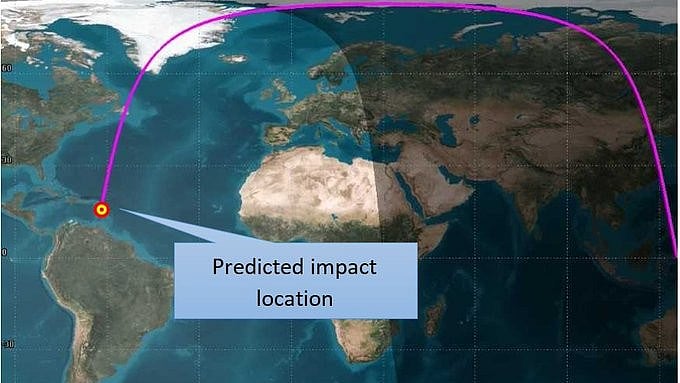
The Indian Space Research Organisation (ISRO) on Tuesday reported the atmospheric reentry and impact of a PSLV-C37 rocket body, seven years after the vehicle was launched.
Credit: X/@ISRO
Bengaluru: The Indian Space Research Organisation (ISRO) on Tuesday reported the atmospheric reentry and impact of a PSLV-C37 rocket body, seven years after the vehicle was launched.
The upper stage of the rocket (PS4) re-entered the earth’s atmosphere on October 6, at around 9.19 pm IST, according to a US Space Command estimate, and fell in the North Atlantic Ocean.
PSLV-C37 was a first-of-its-kind mission, launching 104 satellites with a single vehicle, on February 15, 2017. It had Cartosat-2D as the main payload, along with 103 satellites as co-passengers – INS-1A, INS- 1B, Al-Farabi 1, BGUSAT, DIDO-2, Nayif 1, PEASS, 88 Flock-3p satellites, and 8 Lemur-2 satellites.
ISRO noted that PS4, after injecting the satellites and passivation, was left at an orbit of approximately 470×494 km size. The US Space Command has been tracking it as an object with NORAD id 42052 and its orbital altitude slowly decayed, primarily due to atmospheric drag effects.
IS4OM (ISRO System for Safe and Sustainable Space Operations Management) monitored the orbital decay since September, and predicted the re-entry in the first week of October.
Debris mitigation efforts
As of October 6, the orbit had decayed to a size of 134×148 km. ISRO said the atmospheric re-entry of the rocket body within eight years of its launch was fully compliant with the international debris mitigation guidelines.
The Inter-Agency Space Debris Coordination Committee (IADC) recommends limiting the post-mission orbital life of a defunct object in Low Earth Orbit (LEO) to 25 years. “This requirement was met by properly designing the passivation sequence which lowered the orbit of PS4 after the injection of the payloads,” ISRO said.
The space agency has been undertaking initiatives to ensure that the residual orbital lifetime of PSLV upper stages is reduced to five years or less, by de-orbiting them to lower altitude orbits through engine re-starts. It has also envisioned controlled re-entry to dispose the upper stages in future PSLV missions.